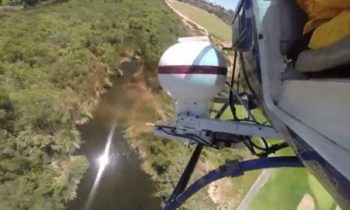What if you called your doctor’s office and the receptionist asked, “What symptoms do you have?” and you had no idea what the word symptoms meant?
How hard would it be to obtain proper medical care if you didn’t understand most of the terms being used or didn’t know what role different health care workers providers played in your care?
That’s the very real scenario facing thousands of immigrants who have settled in San Diego County. East County has seen an increase in Iraqi refugees over the past five years and the estimated 30,000 refugees are the second largest Iraqi population in the United States.
Many of them struggle with culture change and learning a new language. Some have never attended school at all, having opted to join a family business back home where education wasn’t a requirement to put their skills to use.
A six-month pilot called Project SHINE from the County’s Health and Human Services Agency and Grossmont-Cuyamaca Community College District (GCCCD) works with immigrants over the age of 50 to teach them English and health literacy. County officials expect the project will help cut down on health care costs.
“The County had been receiving reports of refugees coming into emergency departments or calling 9-1-1 for non-emergencies,” said Renee Nasori, the Project SHINE coordinator from GCCCD. “The health care system is so different for them over here and this is a huge shock for them.”
Project SHINE is based at the Intergenerational Center at Temple University in Philadelphia. The program’s goal is to teach refugees to manage their own preventative and ongoing healthcare, decreasing the strain on emergency departments and other healthcare resources.
“Some of them can’t read or write in Arabic, let alone in English and we try to teach them all the basics they need to know for everyday health care,” said Nasori. “Hopefully by learning a little more, they can figure things out such as when to go to the pharmacist instead of the emergency room.
“It’s about helping them shift their mind frame from what used to be to what is – because this is their new country.”
As many as three dozen refugees attend each class. Classes meet once a week for two hours. Right now there are classes at Elder Multicultural Access and Support Services (EMASS) and Our Mother of Perpetual Help Syriac Catholic Church, both in El Cajon, with two more classes scheduled to start in the next few weeks at two additional sites.
In class participants are taught basic medical terms and they role play situations where they would interact with health care professionals, such as a telephone call with a doctor’s office: “Hi, I would like to make an appointment to see Dr. Parker today.”
The participants have a worksheet they fill out to practice writing the words, and they collectively read it out loud so they feel like they are having the actual conversation with the doctor’s office.
The class mixes health care terminology like prescriptions and nurse practioner with slang terms that might confuse a refugee like “booked up”- as in the doctor’s schedule is full and no appointment is available that day.
“We have one person who reads things in their native language and one person speaks it in English,” said Nasori. “A lot of these words they are hearing for the first time.”
Participants learn a nurse practioner can write prescriptions, so if that’s all they need they don’t necessarily have to see the doctor. They are also taught the importance of being early to a medical appointment.
“We’re getting to the nitty gritty of this,” said Nasori.
Another benefit to the participants is the ability for the older refugees to meet each other and expand their social circles.
“Many of them come over here, they’re in the 50’s, 60’s or 70’s, and they’re depressed,” said Nasori. “They feel like no one understands them.
“This class allows them to network with their neighbors who are in similar situations and get referrals from each other for such things as where the nearest clinic is.”
The volunteers who work with the refugees benefit also.
“Some of the volunteers are refugees themselves,” said Nasori. “The volunteers love empowering the students and seeing them learn.
“And it’s a great experience for the volunteers, too.”





